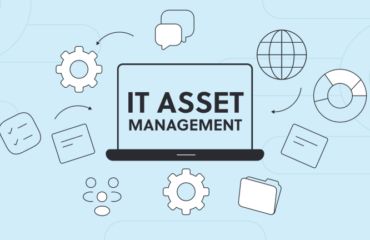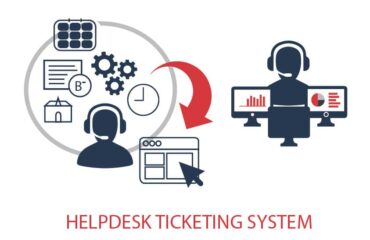
The Role of a Helpdesk Ticketing System
A helpdesk ticketing system is a crucial tool that enhances how organizations manage, resolve, and track technical issues, requests, and incidents. In today’s technology-driven business environment, an effective ticketing system for IT support is essential for maintaining seamless operations, ensuring rapid response times, and monitoring recurring problems. Whether in a small business or a large corporation, the necessity for organized communication between users and the IT department is vital. This article examines the role of an IT ticketing system, highlighting its functions, significance, and its contribution to overall operational efficiency.
What is an IT Ticketing System?
An IT ticketing system is a software tool utilized by IT teams to handle and resolve IT tickets, which can include queries, issues, service requests, or problems related to hardware, software, or other technical concerns. Each ticket represents a task or issue, enabling users to submit, monitor, and track these IT tickets from creation to resolution. This process provides a structured approach to managing issues, ensuring that nothing is lost in communication or overwhelmed by numerous requests.
Typically, the ticketing system software incorporates various features such as automation, categorization, prioritization, and ticket routing. This ensures that the appropriate personnel with the required skills address the relevant tasks efficiently.
Key Features of an IT Ticketing System
- Ticket Creation: The process begins when a user submits a support request, which is transformed into an “IT ticket.” Each ticket includes pertinent details about the issue or request, such as the type of problem, severity, and any other relevant information.
- Ticket Assignment and Categorization: Once created, the ticket is assigned to the appropriate IT personnel based on the issue’s type and priority. The system may automatically route the ticket to specific departments or team members specializing in the relevant area.
- Priority Setting: Not all IT tickets are created equal. Some issues, such as network outages, require immediate attention, while others, like requests for software installation, may have lower urgency. An IT ticketing system enables prioritization of tickets based on urgency, importance, and business impact.
- Tracking and Monitoring: Users and IT staff can track the progress of an IT ticket in real time. This transparency is essential for both parties—users can see that their requests are being addressed, while IT staff can manage and organize their workload effectively.
- Knowledge Base and Documentation: A robust IT ticket tool may feature a knowledge base that stores solutions to recurring problems. IT staff can reference this repository, which accelerates resolution times and provides self-help options for users.
- Automation: Many IT ticketing systems come equipped with automation features to streamline repetitive tasks, such as ticket assignment or escalation. Automated workflows minimize human error, ensuring that IT tickets are resolved within the desired timeframe.
- Reporting and Analytics: An IT ticketing system gathers valuable data on support activities. Reporting tools provide insights into ticket resolution times, common issues, team performance, and customer satisfaction, fostering continuous improvement in IT service delivery.

The Role and Importance of an IT Ticketing System
The primary function of a helpdesk ticketing system is to facilitate efficient issue resolution and ensure accountability in IT services. Here are the main ways an IT ticketing system contributes to organizational success:
Centralized Communication Hub
An IT ticketing system serves as a centralized platform for communication between IT teams and end-users. Without such a system, requests for assistance might be scattered across emails, phone calls, or instant messages, leading to confusion, miscommunication, or tasks falling through the cracks. A ticketing system consolidates all requests in one location, making it easier for IT teams to manage their workload and ensuring users know exactly where to seek help.
Streamlined Workflow and Organization
One of the most significant advantages of an IT ticketing system is how it streamlines workflow. By assigning tickets based on category, skill set, and priority, the system ensures that IT personnel handle issues that match their expertise, leading to faster resolution times. It helps IT managers balance workloads, preventing some staff members from being overwhelmed while others remain underutilized.
Accountability and Transparency
When tickets are logged and tracked within a system, accountability is built into the process. Each ticket has a clear trail from creation to resolution, allowing users and IT managers to monitor progress. Additionally, if any issues arise, the history of actions taken on the ticket can be reviewed, enabling the identification of steps to enhance the process. This transparency also ensures users feel valued and informed, as they can track the status of their requests and receive updates, minimizing frustration and reducing unnecessary follow-ups.
Better Resource Management
By prioritizing and categorizing tickets, an IT ticketing system assists in allocating resources where they are needed most. For example, critical system outages will be addressed before lower-priority tasks, such as password resets or minor software glitches. This ensures that IT departments function efficiently and allocate resources in alignment with business needs.
Improved Service Quality
With a structured IT ticketing system in place, IT teams can provide higher-quality service. Automating repetitive tasks, maintaining accurate records, and routing tickets to the right personnel can significantly reduce resolution times. Furthermore, the system’s ability to monitor performance and generate reports helps IT teams continuously enhance their services by identifying areas needing additional attention.
Data-Driven Decision Making
The data collected through an IT ticketing system can be invaluable for decision-making. Managers can analyze trends in issues, identify recurring problems, and even anticipate potential system vulnerabilities. This data aids in planning future IT strategies, optimizing resource allocation, and improving overall service delivery.
Enhances User Satisfaction
A reliable IT ticketing system keeps users satisfied by providing a quick, efficient, and transparent way to resolve their issues. Users feel more confident when they know their requests are being handled systematically and can track the status of their IT tickets at any time.
Conclusion
In today’s fast-paced business environment, where IT systems are the backbone of most operations, the importance of an IT ticketing system cannot be overstated. It offers an organized, efficient, and accountable method for managing IT support requests, ensuring timely issue resolution, and fostering better communication between IT teams and end-users. By streamlining workflows, improving resource management, and providing transparency, a ticketing system ultimately enhances operational efficiency and user satisfaction, making it an indispensable tool for modern organizations.




[…] IT ticketing system is essential for modern IT support, offering an efficient way to manage and resolve technical […]